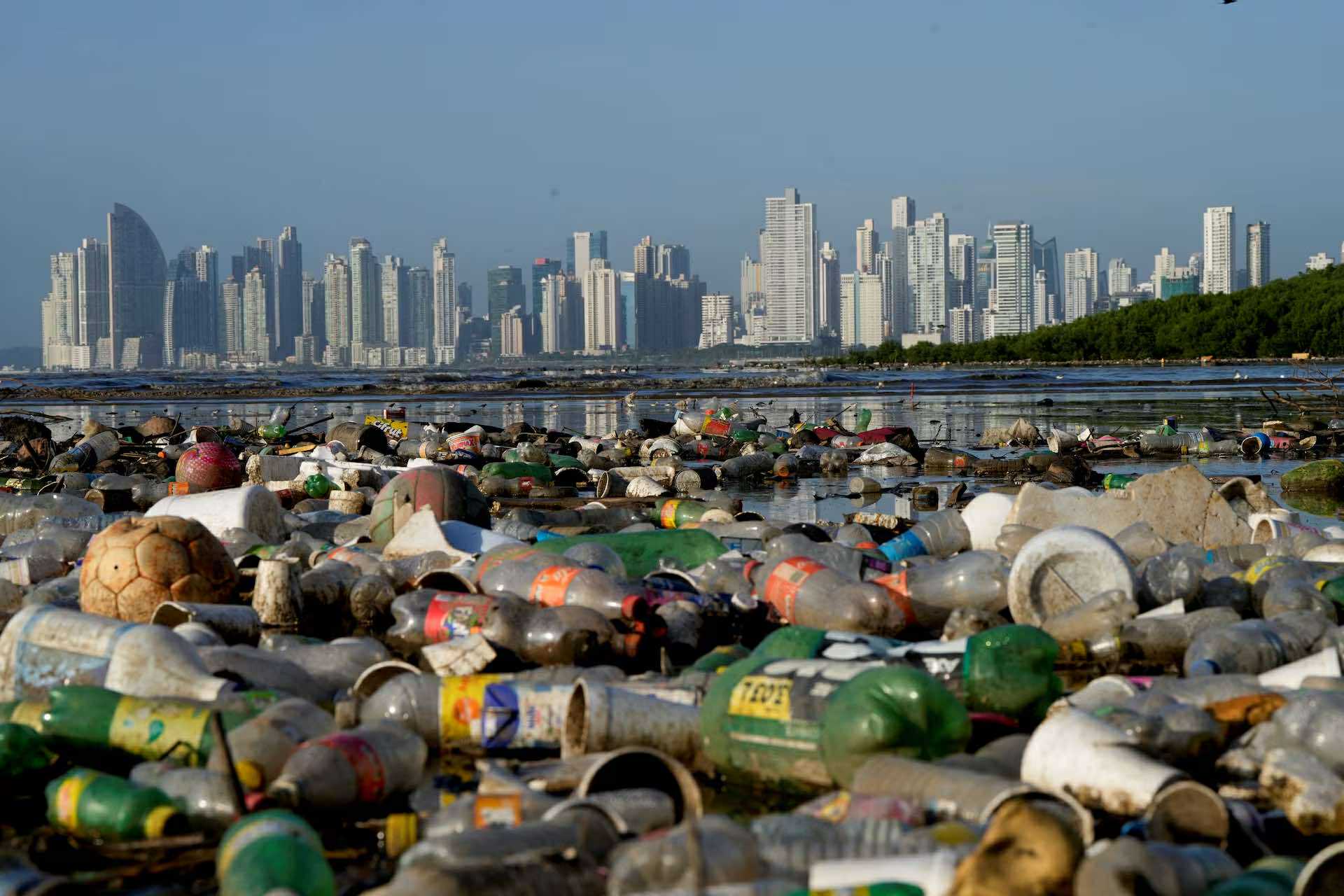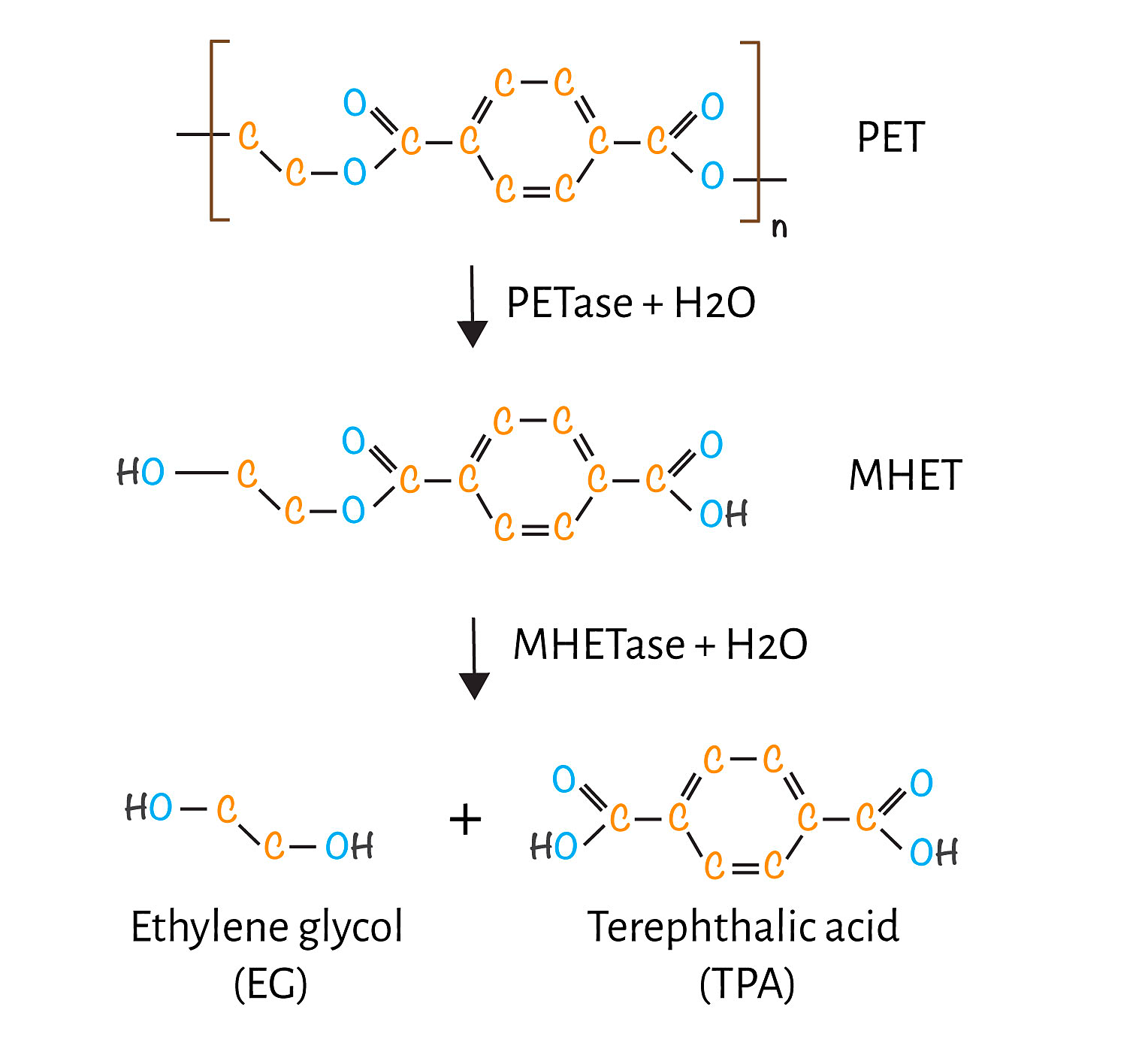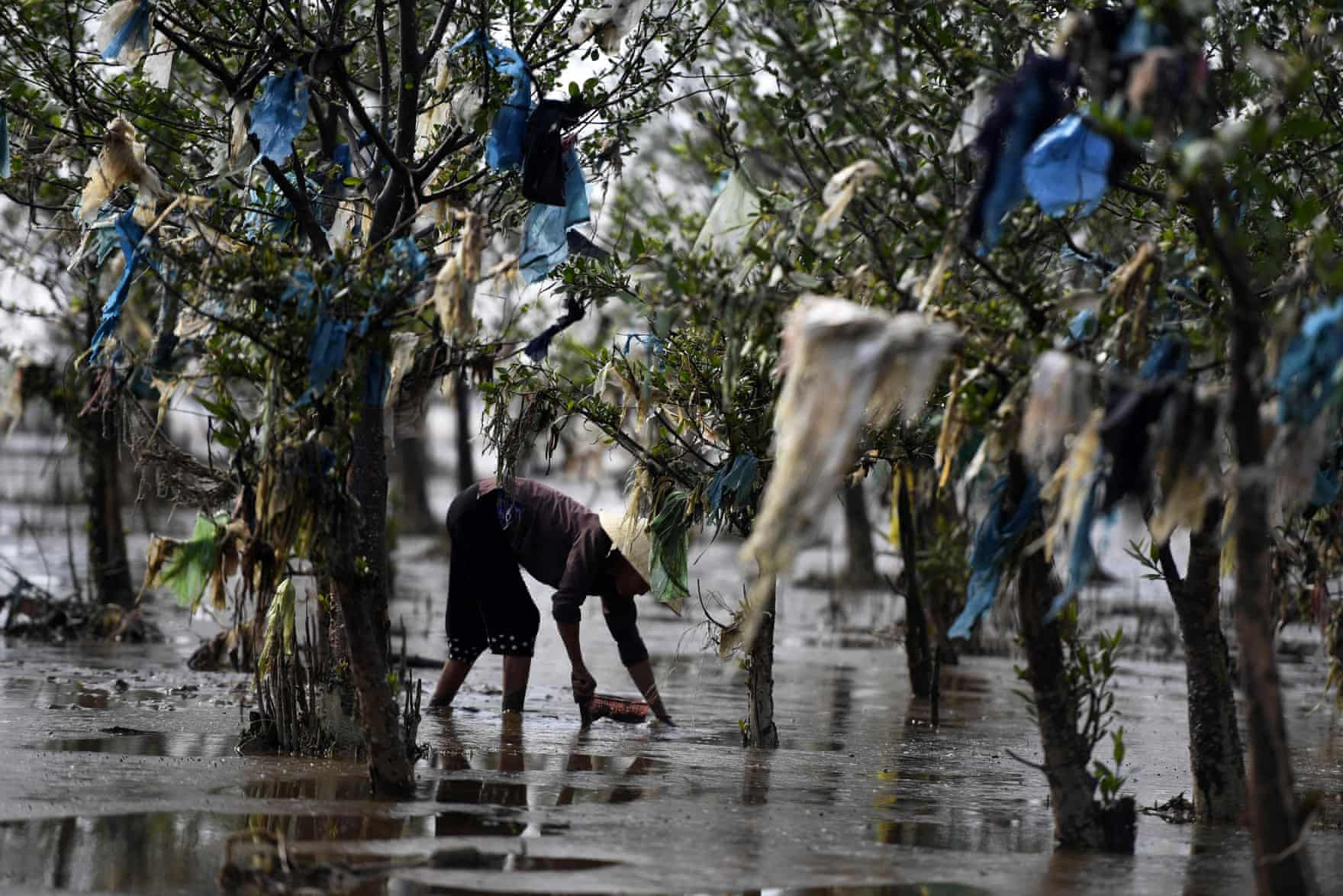Have you ever wondered why banana peels, cotton clothes, and paper biodegrade, while plastic persists for centuries? The natural decomposition process relies on tiny recyclers: bacteria. They have honed their skills over billions of years, consuming anything within reach (plants, animals) and converting it into energy for survival.
Compared to Earth's history, plastic is a newcomer, less than 100 years old. This material is largely derived from crude oil, undergoing multiple refining and blending processes to create various types of plastic. For example, polypropylene (PP) is strong and durable, perfect for products like food containers. Polystyrene (PS) is softer, lighter, and ideal for foam packaging or building insulation.
Due to this complex blending and durable structure, plastic is initially foreign to bacteria. They need time to adapt to “consuming” this new material.
 |
Plastic pollution in a mangrove area in Panama Bay, 6/12/2024. Photo: Reuters |
Plastic pollution in a mangrove area in Panama Bay, 6/12/2024. Photo: Reuters
Similar to the concept of natural enemies, Ideonella sakaiensis, the first plastic-eating bacteria, was discovered in 2016 at a waste site next to a recycling plant in Sakai, Japan. It's considered a “rebel” in the bacterial world, capable of consuming PET, the most common plastic used in bottles and clothing.
Ideonella sakaiensis is a rod-shaped bacterium. To eat plastic, it secretes special enzymes called PETase and MHETase. Their plastic decomposition process resembles hungry ants devouring a sandwich, where PETase and MHETase act like strong jaws. PETase breaks down the long, durable polymer chains in plastic into simpler monomers. MHETase further breaks these down into ethylene glycol and terephthalic acid (even smaller monomers), the precursors of plastic.
After absorbing these small monomers, the bacteria convert them into energy.
 |
How bacteria convert plastic waste into basic components. Source: RS Science |
How bacteria convert plastic waste into basic components. Source: RS Science
The discovery of plastic-eating bacteria offers new hope for managing and recycling this waste, especially with the world projected to generate 700 million tons of plastic waste by 2040. Scientists hope to find more similar bacteria with faster decomposition rates than Ideonella sakaiensis's seven weeks.
A race to find these bacteria has begun, prompting scientists worldwide to search for microbes with this “superpower” and profit potential.
In early 2023, researchers at Chonnam National University in South Korea used a construction rig to drill 15 m deep into a city landfill. There, Professor Soo-Jin Yeom and colleagues found Bacillus thuringiensis, a bacterium that can survive by consuming plastic bags. They are studying the plastic-metabolizing abilities of this bacterium’s enzymes.
In the mangrove forests of Vietnam and Thailand, Simon Cragg, a microbiologist from the University of Portsmouth, also hunts for PET-eating bacteria. Mangrove roots often become entangled with plastic waste. He hopes that bacteria capable of decomposing mangrove roots might also consume plastic.
 |
A section of mangrove forest in Vietnam entangled with plastic waste, 2018. Photo: AFP |
A section of mangrove forest in Vietnam entangled with plastic waste, 2018. Photo: AFP
Based on these discoveries, scientists are improving enzymes and scaling up their application, aiming to address the plastic waste crisis.
In 4/2020, researchers from the University of Toulouse and Carbios, a French biotechnology company, discovered an enzyme that can break down 90% of PET plastic bottles in just 10 hours. By stirring plastic bottles in an enzyme solution for a few hours, they can be converted back into their basic building blocks, paving the way for bacteria-based plastic recycling.
Approximately one million plastic bottles are sold every minute globally, totaling 500 billion bottles annually. This recycling method creates material comparable to virgin plastic (plastic that has never been recycled), giving nature a break from further extraction.
Another significant benefit is the potential to recycle polyester clothing, as over 50 million tons of polyester clothes (made from PET) are discarded globally each year, contributing to pollution and greenhouse gas emissions.
Beyond bacteria, scientists have discovered another plastic “natural enemy”: waxworms. These are the larvae of wax moths, commonly used as fishing bait. Their plastic-eating ability was discovered in 2017 by Spanish and British scientists when plastic bags containing them were found with holes.
Other worm species are also being studied. In Serbia, for example, mealworms are being trained to consume PE and PS plastics, producing only CO2 and water as waste.
While worm-based plastic recycling remains experimental, bacteria-based recycling is the only method currently successful on a commercial scale. The world’s first such plant is slated to begin operation this year, recycling 50,000 tons of PET plastic annually. Carbios, the company behind the project, expects this advanced recycling industry to reach €200 billion (over USD 235 billion) by 2050.
Despite initial success, scientists caution that bacteria- and worm-based plastic recycling require waste collection infrastructure, similar to mechanical or chemical recycling. Managing plastic waste also necessitates reduced production and consumption, source separation, and improved eco-friendly product design to facilitate recycling.
Bao Bao (via Novonesis, The Guardian)












